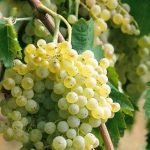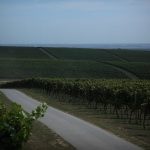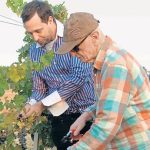If the proposed changes to the Zoning Plan of Dubrovnik-Neretva County are adopted, vineyards on Komarna will be history
Hundreds of hectares of rocky surface overgrown with bushes has been cultivated in the past ten years into agricultural land with quality Plavac Mali and other wine varieties, to be destroyed with just one signature to changes in the zoning plan, specifically the Environmental Impact Study, placing this area into strict reserve of Mali Ston bay and an area important for bird migration, Slobodna Dalmacija reported on March 6, 2017.
In the study winemakers have been marked as the largest polluters, asking the Croatian government to examine the decision from 2004, when the slopes of Komarna were given into concession to seven Neretva wine growers.
Everyone agrees the plantations of oysters and mussels need to be protected as an original Croatian brand, limiting tourism construction in their immediate vicinity on Pelješac.
But on one understands how come the only vineyards in Croatia with ecological cultivation on the slopes of Komarna can pollute or destroy the Mali Ston bay or prevent the migration of birds over the area.
If the environmental study is adopted, created for the purpose to limit any economic activity in the area of the strict reserve, in question will also be the Pelješac Bridge as its construction site is only several hundred metres from the vineyards.
The bridge has been marked as potential danger, but considering its importance, no one denies its necessity, so let us return to the vineyards and wine growers who don’t know how to proceed.
Seven wine growers were given concessions on Komarna by the Ministry of Agriculture for 50 years in order to create agricultural land, confirmed by Croatian Forests since the land was low category forest – bushes.
SO far they have invested over 150 million kuna to prepare terrain and raise vineyards and buildings. Part of the money was gained through EU funds for the Komarna area to become a wine region titled “K7,” with hundreds of thousands of vines planted.
“Komarna didn’t become a wine region by accident,” the wine growers stated. It was decided after elaborate expert studies, while the complete cultivation of vineyards is ecological. Small wineries were also built as the grapes are processed where they are harvested, a world trend in wine production.
Now bureaucratic changes to the Zoning Plan of Dubrovnik-Neretva County can destroy overnight what wine growers have been creating for years. One move of the pen and a wine region, meant to be the driving force of economic development of Neretva River valley, will be scratched.
The future of wine growing, entrepreneurship and potential economic activity in this area is being destroyed, especially tourism, as the proposed rules, if adopted, will not allow cultivation of vines on Komarna, let alone wineries and tasting rooms. In question are also wine roads, which they intended to create with EU funds meant for rural development.
There won’t be any new plantations or vines and olives and, it may seem, the area will have to be returned to its original state – vines removed for bushes to grow again.
“Two wineries have been built in the wine region and we expect other buildings to be built. In cooperation with local administration we are preparing documentation for investments in constructing local roads, which would improve existing ones and build new ones to connect the buildings.”
“This would provide all visitors with uninterrupted tours of wineries of our wine region with the goal of keeping them in our area as long as possible. Our ultimate goal is to shape the Komarna wine region as a desirable and attractive green, touristic and rural destination and further development of our neglected rural areas,” the K7 association stated in their objections to the environmental study.
Wine grower Davor Martinović agreed. He said the construction of a wine tourism road is quite important, which would make Komarna wine region a tourism destination. In long-term development plans a road train is planned for touring the wine region.
Thus wineries, besides processing grapes and producing wines, become an interesting tourism destination. This should in no way be limited by the county zoning documentation since such activities do not endanger the natural reserve of Mali Ston Bay.
K7 association President Mihovil Štimac pointed out the main goal of wine growers of the region is development, and everything around the zoning plan has gotten out of hand.
“The Komarna area has been listed as a strict reserve of Mali Ston Bay and in the ecological network Natura 2000. No one is against ecology. We strive for man and nature to cohabitate. But when someone says vineyards are a devastation of space and the biggest polluters, I wonder if that person is sane,” said Štimac.
“I wonder if someone mean is behind it or is it just an administrative error. The environmental study can be focused to anyone’s needs, but if it aims to prevent the prosperity of Slivno District and Neretva valley, then this is purposeful limitation of development under the excuse of protecting Mali Ston Bay.”
“How can one winery on top of a hill, which creates no waster, has a separator of oils and fats and a neutralizer of acids, be a larger polluter of the planned tourism village Stonske Dube or sewage in Klek? Logically, what damages shell growers more? If we will protect the environment, and people go abroad, what have we done,” resolute is Štimac, who sent questions to those in charge in Dubrovnik-Neretva County.
“Are we protecting the environment to keep people here or just to have a nice image on postcards? Wine region Komarna is a development factor of the entire Neretva. We invested our money and then administration creates obstacles instead of opening doors to expand economic activity. If the area is to be reverted to the original state, with forests and bushes, then we don’t even need the development of Neretva and county.”
“Ecologists claim the original condition of the area has been disturbed. Which original condition are we to go back to, to the times of Turks and Venetians? We all want cohabitation of man and nature. At least in Croatia we have plenty of nature to show. Our land is devastated and neglected and now ecological measures will be taken to ruin the little economic activity there is,” said Štimac, emphasising the environmental study is flawed and does not reflect the actual situation in the field.
“Maps used as a basis for the environmental study don’t even contain vineyards planted here since 2005. These are agricultural surfaces noted in Arkod and on Google and then the creators of the study come with maps from 2002, with no vineyards, just forests. Then they say the forests need to be protected, but it’s no longer a forest, it’s been a vineyard for ten years. And now a county body is to examine the decision by the Croatian government from 2004 on placing this land into concession,” concluded Štimac and wondered who is bothered by the vineyards in Komarna.
“When a study is undertaken, the goal is declared. If development is unwanted, then it should be said loud and clear: all of you in Neretva will remain peasants and cattle breeders in protected nature with occasional visits from cruiser groups from Dubrovnik” Either someone is aiming to harm us or someone is not doing their job properly. In both cases, the client of the study, Dubrovnik-Neretva County, needs to react. The Law on Ownership and Agricultural Land is clear,” the K7 wine growers stated resolutely.
“One cannot avoid accepting the current state in the field when creating any study. I agree there can be provisions on how to behave in a protected area, but no one can say it is all being erased and there is nothing there when vineyards have been planted ten years ago. It is not a forest, it is agricultural land with permanent plantations – vineyards. And the state insisted for the forest land to be cultivated and vineyards planted before we entered the EU, and now someone wants to erase that,” said Štimac.
The situation is dangerous for wine growers in Komarna as, if the Zoning Plan of the County is adopted, lower rank plans, in this case of Slivno District, must be adjusted to match that of the county, which would require after 12 years to revise the existing situation in the field, removing vines and returning the area into original condition.
“We are not against the protection of the area, but demand the voice of those for economic development, employment and ultimately demographic renewal to be heard. The entire Neretva cannot be a protected area! Bird habitats have not been defined. These are migration flights, bothered by, as ecologists and biologists say, vineyards. This state protects all sorts of things, except people who work and create new jobs,” added Štimac.
Wine growers are also not clear what the situation is with the construction of apartment villages in Duba Stonska and on Planikovac above Bistrina Bay, warned of by the science council of the Sea and Coastline Institute from Dubrovnik.
Scientists are against such construction within the area of Mali Ston Bay, with support from Neretva wine growers, who feel they are collateral victims of larger interests, something that needs to be solved by Dubrovnik-Neretva County as the client of the environmental study.
Dubrovnik-Neretva County Prefect Nikola Dobroslavić has introduced the problem to Agriculture Minister Tomislav Tolušić during his recent visit to Neretva valley.
“Komarna winemakers have come with this problem to the County and we have spoken about it in several meetings. We generally support the planting of vineyards in karst, hence the Komarna vineyards are in the proposed changes to the Zoning Plan. The creators of the strategic assessment of environmental impact have a very restrictive view of all entrepreneurial undertakings, however, we will insist on achieving sustainable balance between nature protection and necessary development which will ensure quality of life and development in a certain area,” concluded Prefect Dobroslavić.
Prefect’s words are no comfort for wine growers if something substantial is not done, and they propose for this study to be rejected and anew one made, which will take the actual situation in the field into consideration.
“This environmental study has wrong assumptions of an ecological network. This ecological network encompasses the Neretva delta area, as well as Komarna wine region, to protect bird habitats and their migration routes. It is interesting to note that so-called protectors are referring to an ecological network without explaining what exactly would be the negative impact of the Komarna wine region,” said Nebojša Jerković from the veterans association Modrozelena,” which also has vineyards on Komarna.
“Environmentalists were obliged to provide mapping of stations and monitor birds, those endangered in their flight by these vineyards. Unfortunately, this was not done and such a wide ecological network has no purpose in this case. It should be mentioned that the cited ecological network is not in conflict with using land for agricultural purposes, especially Komarna wine region and an ecological region,” said Jerković.
He and other wine growers agree they will demand from Dubrovnik-Neretva County compensation for damages unless the actual situation in the field is accepted, which is that vineyards on Komarna are agricultural land by the Agricultural Land Law and Spatial Planning Law. Wine growers from Komarna hope reason will prevail and they will be able to continue working the vineyards and producing wine in an ecologically acceptable way, the same way they have so far, taking into consideration man and nature.











